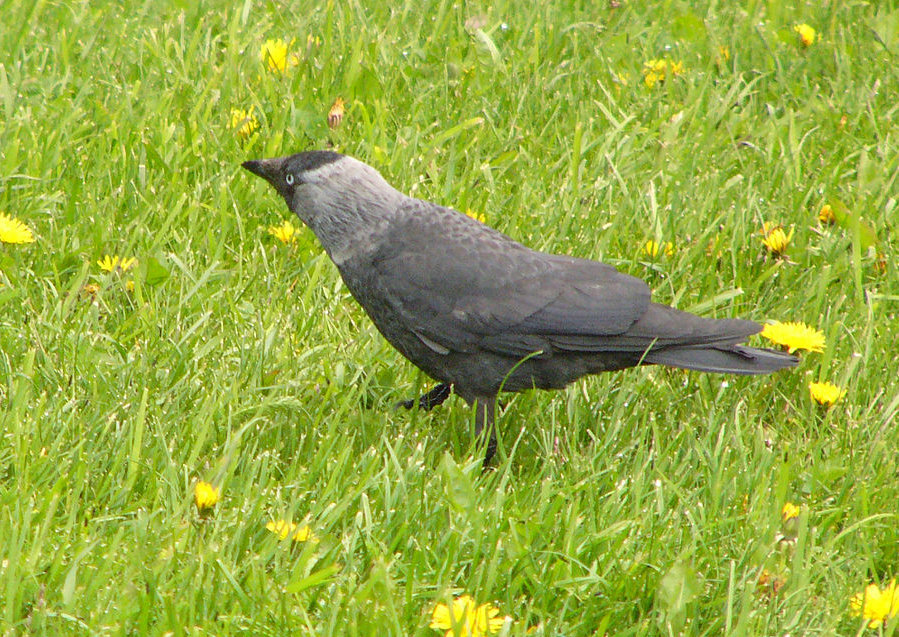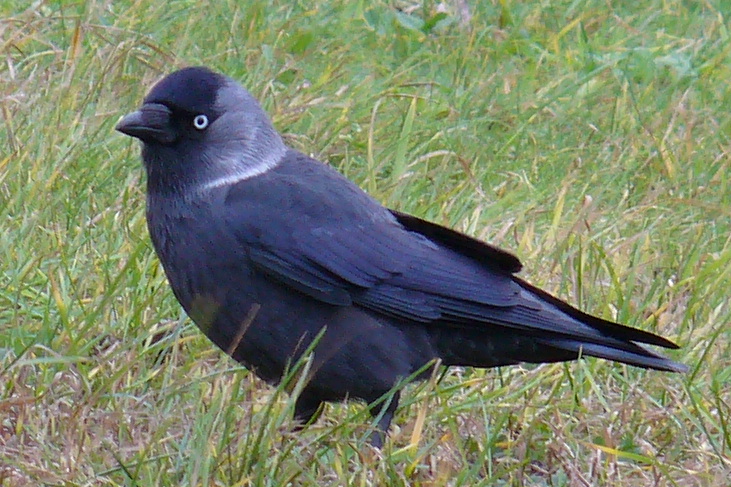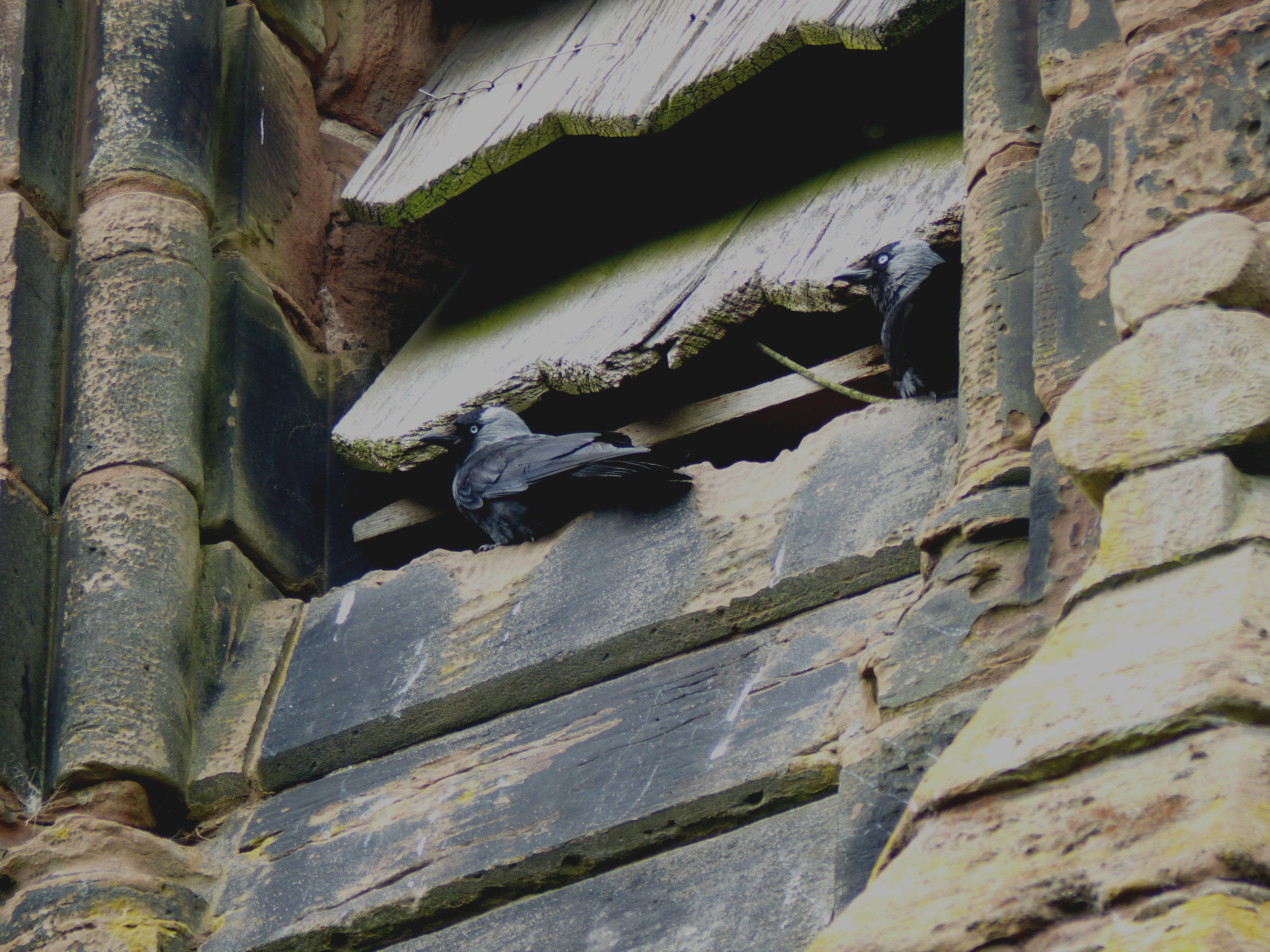Garden Wildlife
Garden Wildlife


What do they eat?
Like most crows, jackdaws are omnivorous, scavengers and opportunists. They are big enough to eat small mammals, frogs, slugs, worms and other creatures. They also take to grain, fruit, and scraps. They will eat fats put out at feeding stations (amongst everything else they can get at).
What do they do?
Jackdaws are social birds, living in pairs in straggling colonies often around human settlements. They are by nature tree-hole nesters but also readily use our built environment or rocky cliffs (eg near the sea). They tend to walk around on the ground in a jaunty confident way, a bit more quickly and precisely than the other black crows. You can often see flights of Jackdaws going to and from between their colonial area and food sources. They are vocal, noisy birds. They are socially interactive and will mob apparent threats whether human or animal.
How are they doing?
Jackdaws have been successful over the last few decades, the BTO Breeding Bird Survey for 2019 indicating a 60% increase over 20 years. In 2016 there werre estimated to be about 1.6 million pairs in Britain.
Finding out more:
BTO profile on jackdaw
RSPB profile on jackdaw
Page written by Roy Smith, compiled by Steve Head
Jackdaw Coloeus monedula
One of the common garden crows, recorded in about a third of British gardens.
What do they look like?
The jackdaw is a smarter and rather more dainty bird than its cousins among the black crows. The bill is shorter and less dagger-like, the face and head more strongly patterned in black and grey, and the build generally more rounded and less straggly. I think they are quite elegant.
They are about 34 cm long, around 2/3 the size of a carrion crow. The head is more rounded with a high crown, and the body is more compact looking than a carrion crow. The face is black but the crown and nape of older birds is greyish, forming a smart cowl down to the bottom of the neck. Bill, eye and legs are black. See our crows page for comparisons with their relatives.
What do they sound like?
Jackdaws are named after their call. Just say ‘Jack, Jack, Daw’ and you will sound like a Jackdaw. They are gregarious birds so their collective calls can be quite intrusive (or charming, depending on your take on the crow family). They have several other less obvious calls and sounds around their nests and roosts.


Irish Wildlife Sounds, XC637575. Accessible at www.xeno-canto.org/637575.
Jackdaws like to nest in old Victorian architecture

Jackdaw Coloeus monedula
One of the common garden crows, recorded in about a third of British gardens.


What do they look like?
The jackdaw is a smarter and rather more dainty bird than its cousins among the black crows. The bill is shorter and less dagger-like, the face and head more strongly patterned in black and grey, and the build generally more rounded and less straggly. I think they are quite elegant.
They are about 34 cm long, around 2/3 the size of a carrion crow. The head is more rounded with a high crown, and the body is more compact looking than a carrion crow. The face is black but the crown and nape of older birds is greyish, forming a smart cowl down to the bottom of the neck. Bill, eye and legs are black. See our crows page for comparisons with their relatives
What do they sound like?
Jackdaws are named after their call. Just say ‘Jack, Jack, Daw’ and you will sound like a Jackdaw. They are gregarious birds so their collective calls can be quite intrusive (or charming, depending on your take on the crow family). They have several other less obvious calls and sounds around their nests and roosts.

Jackdaws like to nest in old Victorian architecture
What do they eat?
Like most crows, jackdaws are omnivorous, scavengers and opportunists. They are big enough to eat small mammals, frogs, slugs, worms and other creatures. They also take to grain, fruit, and scraps. They will eat fats put out at feeding stations (amongst everything else they can get at).
What do they do?
Jackdaws are social birds, living in pairs in straggling colonies often around human settlements. They are by nature tree-hole nesters but also readily use our built environment or rocky cliffs (eg near the sea). They tend to walk around on the ground in a jaunty confident way, a bit more quickly and precisely than the other black crows. You can often see flights of Jackdaws going to and from between their colonial area and food sources. They are vocal, noisy birds. They are socially interactive and will mob apparent threats whether human or animal.
How are they doing?
Jackdaws have been successful over the last few decades, the BTO Breeding Bird Survey for 2019 indicating a 60% increase over 20 years. In 2016 there werre estimated to be about 1.6 million pairs in Britain.
Finding out more:
Page written by Roy Smith, compiled by Steve Head
























